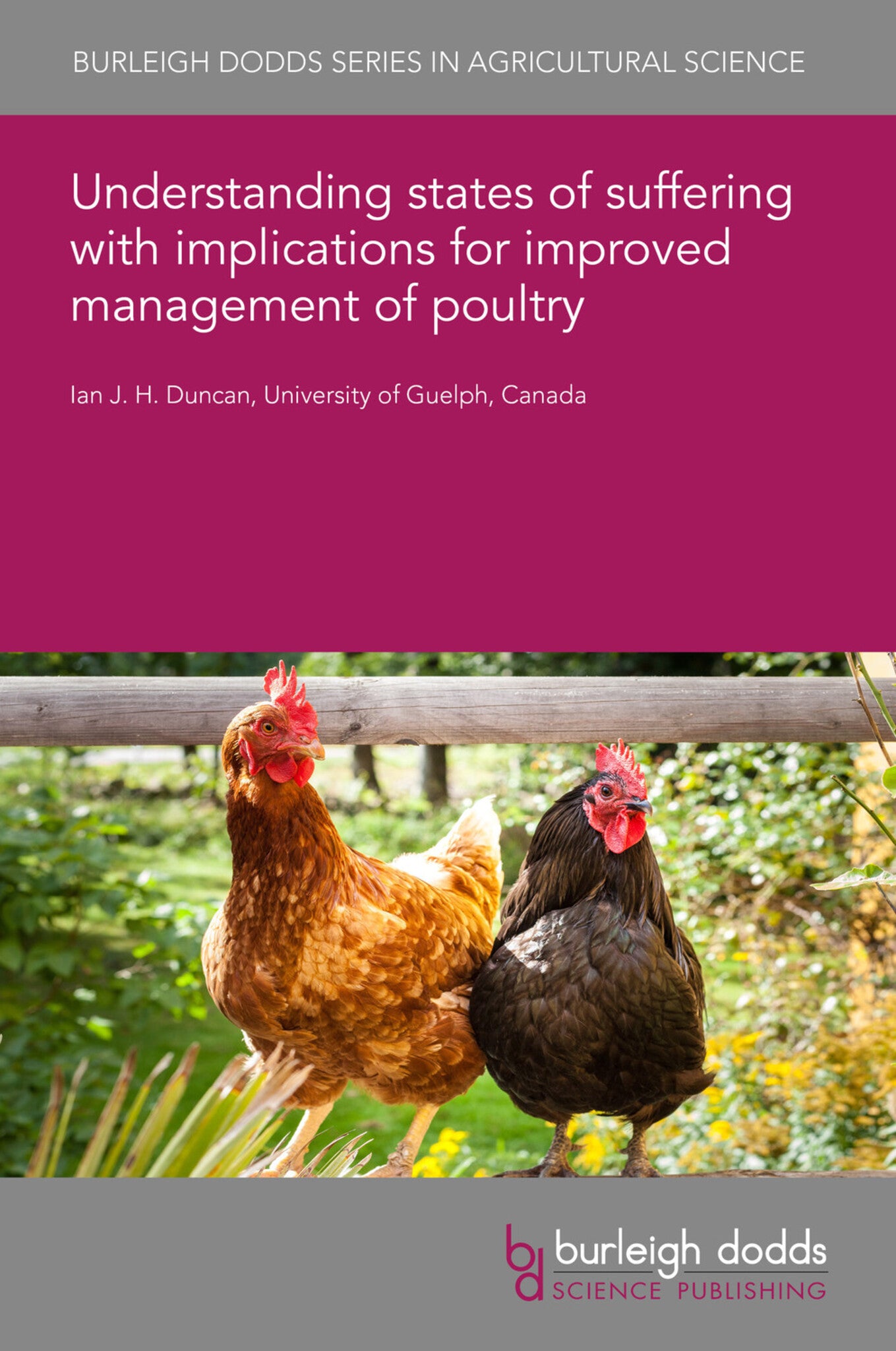We're sorry. An error has occurred
Please cancel or retry.
Understanding states of suffering with implications for improved management of poultry
Regular price
£25.00
Sale price
£25.00
Regular price
£25.00
Unit price
/
per
Sale
Sold out
Re-stocking soon
The causes of the main states of suffering experienced by poultry species, namely fear, frustration and pain, are listed and the behavioural symptoms are described. Birds can be frightened by stimu...
Read More

Some error occured while loading the Quick View. Please close the Quick View and try reloading the page.
Couldn't load pickup availability
- Format:
-
28 September 2020

The causes of the main states of suffering experienced by poultry species, namely fear, frustration and pain, are listed and the behavioural symptoms are described. Birds can be frightened by stimuli that are (1) sudden and intense, (2) novel, and (3) signalling special evolutionary dangers. The lack of a nesting site and lack of a roosting site in battery cages are the main causes of intense frustration in laying hens. Pain can be caused by feather pecking and cannibalism, the artificial environment, surgical procedures, and breeding practices. Possible solutions to these problems are suggested. Some other states of suffering including extreme hunger, behavioural restrictions not causing obvious frustration, and suffering due to social friction are also described. Possible solutions to all these welfare problems include changing the birds genetically, redesigning the birds’ environments and modifying husbandry procedures are discussed.

Price: £25.00
Publisher: Burleigh Dodds Science Publishing
Imprint: Burleigh Dodds Science Publishing
Series: Burleigh Dodds Series in Agricultural Science
Publication Date:
28 September 2020
ISBN: 9781786768667
Format: eBook
BISACs:
TECHNOLOGY & ENGINEERING / Agriculture / Animal Husbandry, Poultry farming, TECHNOLOGY & ENGINEERING / Agriculture / Sustainable Agriculture, Sustainable agriculture, Animal husbandry

1 Introduction 2 Fear 3 Frustration 4 Pain 5 Other states of suffering 6 Conclusions and future trends 7 Where to look for further information 8 References



